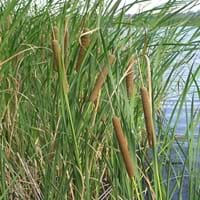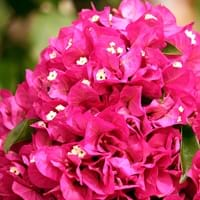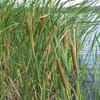Life Span
Perennial
Perennial
Origin
North America, United States, Northeastern United States, Mid-Atlantic United States, Southeastern United States, North-Central United States, Central United States, Western United States, California, Canada
Hybrid origin
Types
Not Available
Brasilensis, Easter Parade, Formosa, Rosenka (Orange), James Walker, Jubilee Showlady, Barbara Karst, Elizabeth Angus
Number of Varieties
Not Available
Habitat
Bog Garden, Ponds
Rainforest, Tropical rainforest
USDA Hardiness Zone
3-10
9-11
Sunset Zone
21,22
22, 23, 24
Habit
Thicket/Colonizing
Cushion/Mound-forming
Flower Color
Light Yellow, Light Green
Gold, Magenta
Flower Color Modifier
Not Available
Not Available
Fruit Color
Brown
Brown, Green
Leaf Color in Spring
Green
Dark Green
Leaf Color in Summer
Green
Dark Green
Leaf Color in Fall
Green
Dark Green
Leaf Color in Winter
Not Available
Dark Green
Leaf Shape
Flat, Narrow
Tubular
Plant Season
Summer, Fall
Spring, Summer, Fall, Winter
Sunlight
Full Sun, Partial Sun
Full Sun
Type of Soil
Loam, Sand
Clay, Loam, Sand
The pH of Soil
Acidic, Neutral, Alkaline
Acidic, Neutral, Alkaline
Soil Drainage
Poorly Drained
Well drained
Bloom Time
Early Summer, Summer
Indeterminate
Where to Plant?
Ground
Ground
How to Plant?
Divison, Seedlings
Grafting, Stem Planting, Transplanting
Plant Maintenance
Medium
Medium
Watering Requirements
Needs Very high moisture
Medium
In Summer
Lots of watering
Lots of watering
In Spring
Moderate
Moderate
In Winter
Average Water
Average Water
Soil pH
Acidic, Neutral, Alkaline
Acidic, Neutral, Alkaline
Soil Type
Loam, Sand
Clay, Loam, Sand
Soil Drainage Capacity
Poorly Drained
Well drained
Sun Exposure
Full Sun, Partial Sun
Full Sun
Pruning
Remove damaged leaves
Cut or pinch the stems, Prune for shortening long shoots, Prune if you want to improve plant shape, Prune in the late winter or spring, Prune prior to new growth, Prune to control growth, Remove dead or diseased plant parts
Fertilizers
Nutrient Rich Fertilizer
All-Purpose Liquid Fertilizer
Pests and Diseases
Free of serious pests and diseases
Aphids, Leaf spot, Mealybugs, Red spider mite, Root rot, Whiteflies
Plant Tolerance
Drought
Drought
Flower Petal Number
Not Available
Single
Foliage Texture
Coarse
Medium
Foliage Sheen
Glossy
Matte
Attracts
Wildlife
Hummingbirds
Allergy
Mild Allergen
Itchiness, Skin rash
Aesthetic Uses
Cut Flowers, Wild gardens
Showy Purposes, Used for decorating walls, fences, gates, hedges, etc.
Beauty Benefits
Not Available
Not Available
Environmental Uses
Air purification
Air purification
Medicinal Uses
anticoagulant, Diuretic, Haemostatic, Miscellany
Not Available
Part of Plant Used
Flowers, Leaves, Root, Seeds, Stem
Whole plant
Other Uses
Used as a thickener in soups, Used to make biscuits, Used to produce edible oil, Used to yield a sweet syrup
Showy Purposes
Used As Indoor Plant
No
No
Used As Outdoor Plant
Yes
Yes
Garden Design
Dried Flower/Everlasting, Wildflower
Container, Foundation, Groundcover, Hedges, Mixed Border, Rock Garden, Wall, Tropical
Botanical Name
TYPHA angustifolia
BOUGAINVILLEA 'Helen Johnson'
Common Name
Narrowleaf Cattail, Lesser Reedmace
Bougainvillea
In Hindi
Narrowleaf Cattail
Bougainvillea
In German
Schmalblättriger Cattail
Bougainvillea
In French
Narrowleaf Cattail
Bougainvilliers
In Spanish
Espadaña de hoja estrecha
Bougainvillea
In Greek
στενόφυλλα Cattail
Bougainvillea
In Portuguese
Narrowleaf Tifa
Bougainvillea
In Polish
Wąskolistne Cattail
Bugenwilli
In Latin
Cattail glaucescens
Bougainvillea
Phylum
Magnoliophyta
Spermatophyta
Class
Liliopsida
Dicotyledonae
Order
Typhales
Caryophyllales
Family
Typhaceae
Nyctaginaceae
Genus
Typha
Bougainvillea
Clade
Angiosperms, Commelinids, Monocots
Angiosperms, Core eudicots, Eudicots
Tribe
Not Available
Not Available
Subfamily
Not Available
Not Available
Number of Species
Not Available
Importance of Narrowleaf Cattail and Bougainvillea
Want to have the most appropriate plant for your garden? You might want to know the importance of Narrowleaf Cattail and Bougainvillea. Basically, these two plants vary in many aspects. Compare Narrowleaf Cattail and Bougainvillea as they differ in many characteristics such as their life, care, benefits, facts, etc. Every gardener must at least have the slightest clue about the plants he wants to plant in his garden. Compare their benefits, which differ in many ways like facts and uses. The medicinal use of Narrowleaf Cattail is anticoagulant, Diuretic, Haemostatic and Miscellany whereas of Bougainvillea is Not Available. Narrowleaf Cattail has beauty benefits as follows: Not Available while Bougainvillea has beauty benefits as follows: Not Available.
Compare Facts of Narrowleaf Cattail vs Bougainvillea
How to choose the best garden plant for your garden depending upon its facts? Here garden plant comparison will help you to solve this query. Compare the facts of Narrowleaf Cattail vs Bougainvillea and know which one to choose. As garden plants have benefits and other uses, allergy is also a major drawback of plants for some people. Allergic reactions of Narrowleaf Cattail are Mild Allergen whereas of Bougainvillea have Itchiness and Skin rash respectively. Having a fruit bearing plant in your garden can be a plus point of your garden. Narrowleaf Cattail has showy fruits and Bougainvillea has no showy fruits. Also Narrowleaf Cattail is not flowering and Bougainvillea is flowering. You can compare Narrowleaf Cattail and Bougainvillea facts and facts of other plants too.





